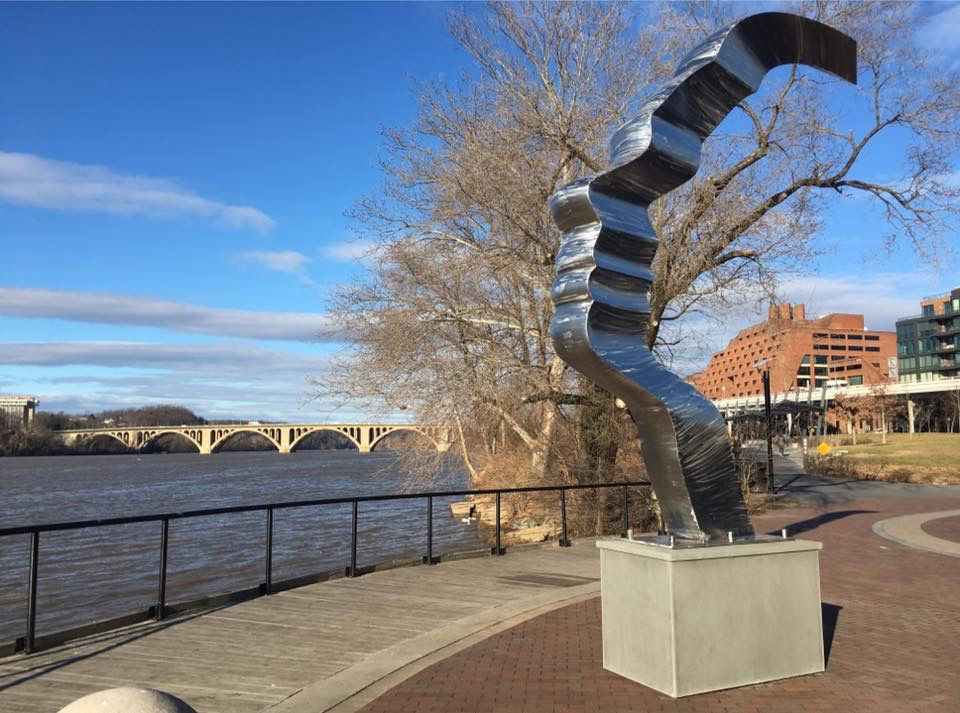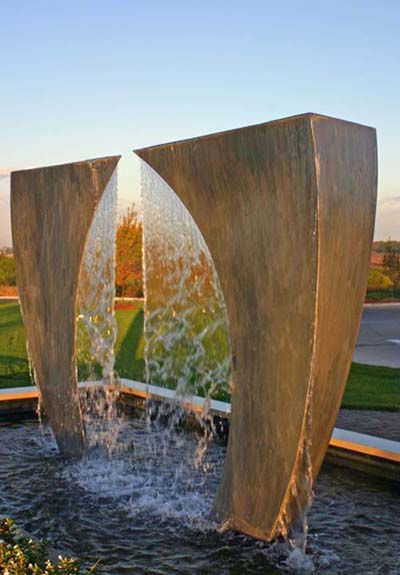Sculptures as Landmarks: Mother Earth and a Global Vision
- sonya4083
- Sep 16
- 5 min read
Throughout history, monumental sculptures have defined the soul of cities. From ancient colossi and sacred icons to modern public art installations, these works have anchored communities while inspiring them to imagine beyond the present moment. They serve as markers of collective memory, civic pride, and cultural aspiration.
As a sculptor, I approach each commission not merely as an object to be admired, but as an opportunity to create a landmark sculpture, a work that resonates across cultures, integrates seamlessly with its environment, and becomes inseparable from the life of a community. Mother Earth: A Universal Form When I designed Mother Earth in 2015, my goal was to create a sculpture that transcended geographic and cultural boundaries. Since then, the work has been installed in cities across the globe, including Washington, D.C.; Buenos Aires, Argentina; Yaoundé, Cameroon; Bonn, Germany; Jerusalem, Israel; Jaipur, India; Guilin, China; and Hamilton, New Zealand.
Each installation stands as both a local icon and a global statement, connecting diverse communities through a shared commitment to sustainability and stewardship of the planet. Collectively, these installations form a constellation of landmarks, reminding us that environmental responsibility is a universal human obligation.

The design of Mother Earth reflects a universal human profile, rendered in stainless steel and intentionally devoid of markers of race, gender, or nationality. Its polished surfaces capture and mirror their surroundings, urban skylines, civic plazas, natural landscapes, so that the sculpture feels alive, rooted in place, and constantly shifting with light, season, and atmosphere.
“A landmark sculpture isn’t defined by size alone, it’s defined by its ability to resonate, to weave itself into the daily lives of people across cultures.” —Barton Rubenstein
Origins: A Personal Story
The story of Mother Earth began with a commission from the Smithsonian’s National Portrait Gallery to celebrate great American women. In response, I chose to honor my late mother, a curator and art historian at the Smithsonian, whose life was devoted to the preservation and interpretation of culture.
This personal tribute soon evolved into something larger. Inspired by my son’s suggestion to place the sculpture on every continent, the vision grew into the Mother Earth Project, a global movement that uses art to raise awareness of sustainability, climate change, and the urgent need for environmental action.
The Mother Earth Project
Today, Mother Earth is at the center of the Mother Earth Project, which includes Parachutes for the Planet® and Mother Earth Murals. Each initiative is designed to engage communities across cultures in acts of creativity, awareness, and sustainability.
We recently revamped the Mother Earth Project website to showcase this global movement more dynamically, making it easier for educators, community leaders, and visitors to explore the installations, learn about ongoing projects, and discover ways to get involved. By weaving together monumental sculpture and grassroots creativity, the project amplifies the idea that art can serve as both inspiration and catalyst for change.

A Sculpture in Dialogue with Place
What has been most rewarding is witnessing how communities make Mother Earth their own. In Buenos Aires, the sculpture reflects the bustle of a civic plaza, it stands tall in a large park next to the city. In Jerusalem, it resonates with layers of history and spirituality, placed in the Bloomfield Gardens next to the King David Hotel and the Montefiore windmill. In New Zealand, it anchors a landscape of extraordinary natural beauty at the University of Waikito, the first university to offer a major in climate change!

Each installation tells a local story while remaining part of a larger global chorus. This dual identity, as both a community landmark and a global icon, is what makes Mother Earth unique. It demonstrates how public art can speak across borders, across generations, and across cultures. The Role of Landmark Sculpture
Landmark sculptures offer more than aesthetic beauty; they establish identity, attract visitors, and create cultural imprints that endure for generations. Great cities have always been defined by their monuments, Paris by the Eiffel Tower, New York by the Statue of Liberty, Rio de Janeiro by Christ the Redeemer, Chicago by Cloudgate. Each stands as more than an object, it embodies the values and aspirations of its time.

In this lineage, Mother Earth positions sustainability and unity at the forefront of cultural expression. Its presence in cities worldwide serves as a reminder that environmental stewardship is not a regional issue but a shared human responsibility. For Developers, Municipalities, and Cultural Leaders
For developers, municipalities, and cultural institutions, commissioning landmark public art is both a cultural and strategic investment. Sculptures of this scale transform plazas, parks, and civic spaces into destinations, increasing engagement, enhancing property value, and strengthening civic identity.
The global journey of Mother Earth illustrates how sustainable public art can function both locally and internationally: serving as a focal point for communities while contributing to a worldwide cultural conversation.
Mother Earth is more than a sculpture, it is a call to unity, a symbol of our shared relationship with the planet, and an invitation to communities worldwide to see themselves as part of something larger. Its universal form and reflective surfaces remind us that our future is bound to the Earth’s, and that public art can catalyze both civic identity and global change.
At its best, landmark sculpture speaks across time and place. Mother Earth demonstrates how art can embody the spirit of a community while also pointing to a global future, anchored in strength, yet responsive to change, reminding us of our collective responsibility to the planet.






Comments